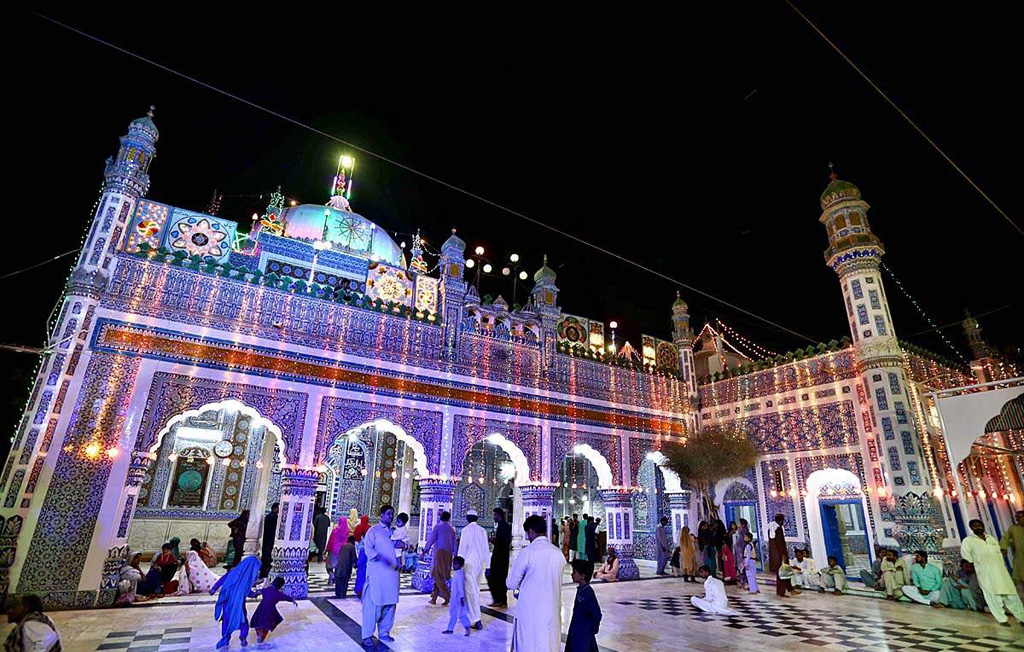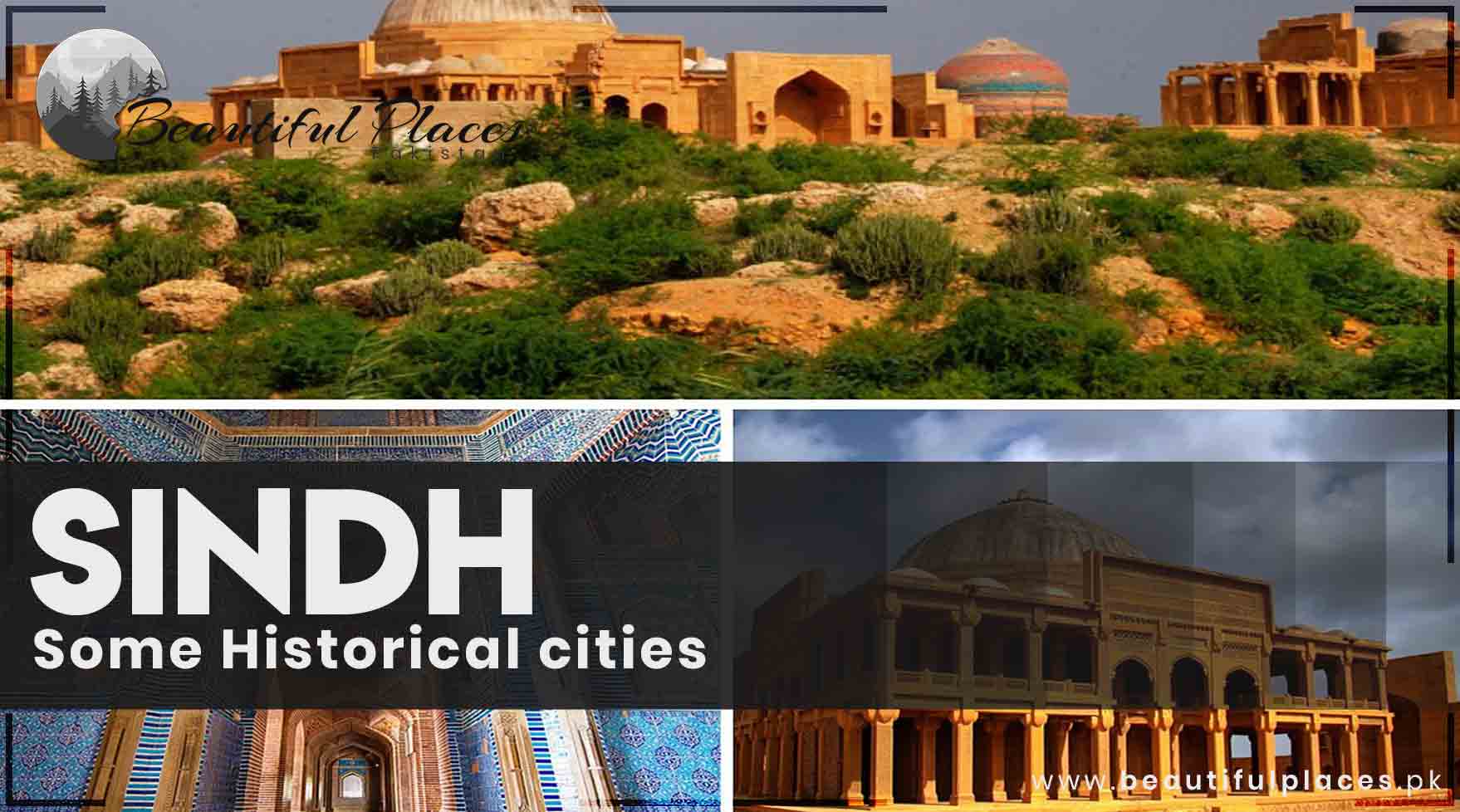Some Phenomenal Heritage Sites of Sindh
Sindh is blessed with Sufi poets, old civilizations, and heritage sites. Shrine of Shah Abdul Latif Bhaittai is one of the famous poets of the Sindh. Shah Abdul Latif Bhattai is acknowledged as the “Crownless King” of Sindh.
Detaille Info about Sindh PK
| Aspect | Information |
|---|---|
| Name | Sindh City |
| Location | Sindh Province, Pakistan |
| Population | Approximately 3 million |
| Area | Not specified, but it’s a significant urban area |
| Historical Significance | Sindh City has a rich history and is known for its cultural and historical importance in the region. It is home to several ancient archaeological sites and monuments. |
| Geography | The city is located in the southern part of Pakistan, near the Arabian Sea, and it has a diverse geography that includes both urban and rural areas. |
| Climate | Sindh City experiences a hot desert climate, with scorching summers and mild winters. It’s prone to seasonal monsoons. |
| Economy | The economy of Sindh City is diverse and includes agriculture, manufacturing, trade, and services. It’s a hub for commerce and business activities. |
| Languages Spoken | The primary language spoken in Sindh City is Sindhi, but Urdu and English are also widely used for business and education. |
| Culture | The city has a vibrant and diverse cultural scene, with a rich tradition of music, dance, and art. It’s also known for its delicious cuisine, with various local dishes. |
| Education | Sindh City has several educational institutions, including universities, colleges, and schools. It’s a center for higher education in the region. |
| Transportation | The city is well-connected through road, rail, and air transport. It has a major seaport that facilitates trade and commerce. |
| Tourist Attractions | Sindh City offers various attractions, including historical sites, museums, and markets. Notable places include the Mohenjo-daro archaeological site and the Quaid-e-Azam’s Mausoleum. |
Exploring the Historical Cities of Sindh
Sindh, the southernmost province of Pakistan, boasts a rich tapestry of history, culture, and spirituality. The region is home to several historical cities that have played pivotal roles in shaping the identity of Sindh. Among the luminaries emerging from this land, Shah Abdul Latif Bhittai stands tall as a revered poet and philosopher. Let’s embark on a journey through the historical cities of Sindh, each echoing tales of antiquity and resilience.
Shrine of Abdul Latif Bhittai
Poet of the Soil In the midst of these historical cities lies the town of Bhit Shah, named after the illustrious poet and scholar, Shah Abdul Latif Bhittai. Born in the 18th century, Shah Latif, as he is affectionately called, contributed significantly to Sindhi literature and Sufi thought. His poetry, compiled in the “Shah Jo Risalo”, reflects his deep connection with the land, its people, and a profound spiritual journey.
Bhit Shah is home to the shrine of Shah Abdul Latif Bhittai, a place where devotees gather to pay homage to the poet’s timeless wisdom. The shrine serves as a cultural and spiritual center, fostering a sense of unity and reverence among Sindhis.
As we conclude our journey through the historical cities of Sindh, we find ourselves immersed in a tapestry woven with threads of ancient civilizations, Sufi mysticism, architectural grandeur, and the timeless verses of Shah Abdul Latif Bhittai. Sindh, with its vibrant past and living traditions, continues to be a testament to the resilience and richness of the human spirit.

As a spiritual leader, he had highlighted the emotions of the poor and oppressed people through his poetry. So, he is respected by the people a lot. At first, the Kulhoro built the tomb. Later, it was decorated by the Talpurs. Both of them tried to make it more beautiful by embellishing it with blue-colored glass tiles. Hala is close to this tomb and the center of these blue tile factories. Tiles were imported from Naseer pur and Multan too. It is the only tomb where “Sufiyana Kalam” (music) is sung at the sunset throughout the year.
Bhatt Shah Cultural Center

Surrounding up to 120 acres, a garden, Karar Lake, an auditorium, library, and a museum is dedicated to this saint. Situated on the Shah Abdul Latif highway, it has things and information related to life, poetry, teachings, and music.
Mohenjo-daro
Echoes from the Ancient Past Our journey begins with Mohenjo-daro, an archaeological marvel that harks back to the ancient Indus Valley Civilization. Flourishing around 2500 BCE, Mohenjo-daro was one of the largest settlements of its time, featuring advanced urban planning and sophisticated drainage systems. Today, its remnants, a UNESCO World Heritage Site, whisper the stories of an ancient civilization that thrived along the banks of the mighty Indus River.
Sehwan Sharif
Sufi Splendor As we traverse through time, the city of Sehwan Sharif comes into view. Nestled along the banks of the Indus, this city is famed for the Shrine of Lal Shahbaz Qalandar, a Sufi saint whose teachings transcended religious boundaries. The shrine stands as a symbol of Sindh’s syncretic culture, attracting devotees and admirers from various faiths.
Thatta
A Tapestry of History Thatta, the erstwhile capital of Sindh, takes us on a journey through the pages of medieval history. From the 14th to the 18th centuries, Thatta thrived as a center of commerce and culture. Its grand monuments, including the Shah Jahan Mosque and Makli Necropolis, reflect the architectural grandeur of bygone eras.
Hyderabad
Bridging Past and Present Moving forward, we arrive in Hyderabad, a city that seamlessly blends history with modernity. With its roots tracing back to the Kalhora dynasty, Hyderabad showcases a unique cultural fusion. Historical landmarks like the Qadamgah Maula Ali and the iconic Clock Tower add a nostalgic charm to the city’s bustling urban landscape.
Karachi
Gateway to Diversity Karachi, the bustling metropolis and the economic heartbeat of Pakistan, is more than just a city; it is a melting pot of cultures and ethnicities. Once a small fishing village, Karachi has transformed into a dynamic cosmopolitan hub, showcasing the diversity that defines Sindh and Pakistan as a whole.
Sukkur
Engineering Marvels on the Indus Our journey concludes in Sukkur, a city known for the Sukkur Barrage. This engineering marvel, spanning the mighty Indus River, is a testament to human ingenuity. Sukkur’s strategic location and historical significance make it a key player in the economic development of the region.
Schools in city of Sindh:
- ABC Public School
- Sindh City Grammar School
- Beaconhouse School System
- The City School
- St. Mary’s High School
Colleges in city of Sindh:
- Sindh City College
- Government Degree College
- Sindh Institute of Information Technology
- Women’s College Sindh City
- SZABIST Sindh City Campus
Universities in city of Sindh:
- University of Sindh
- Liaquat University of Medical and Health Sciences
- SZABIST Sindh City Campus
- Sindh Agriculture University
- Indus Valley School of Art and Architecture
Hospitals in city of Sindh:
- Sindh City General Hospital
- Liaquat Medical University Hospital
- Patel Hospital
- Aga Khan University Hospital (outreach clinic)
- Jinnah Postgraduate Medical Center
Restaurants in city of Sindh:
- Sindh Delights Restaurant
- Al-Makka Restaurant
- Kolachi Restaurant
- BBQ Tonight
- Cafe Clifton
Frequently Asked Questions
What is the significance of Mohenjo-daro in Sindh’s history?
Mohenjo-daro is a UNESCO World Heritage Site and represents one of the largest settlements of the ancient Indus Valley Civilization. It provides insights into advanced urban planning and the social and economic life of an ancient civilization around 2500 BCE.
Tell us more about the Shrine of Lal Shahbaz Qalandar in Sehwan Sharif.
The Shrine of Lal Shahbaz Qalandar is a revered Sufi shrine in Sehwan Sharif, known for its syncretic culture. Lal Shahbaz Qalandar was a Sufi saint whose teachings transcended religious boundaries, attracting devotees from various faiths.
What historical significance does Thatta hold?
Thatta was the former capital of Sindh and thrived as a center of commerce and culture from the 14th to the 18th centuries. Monuments like the Shah Jahan Mosque and Makli Necropolis reflect the architectural grandeur of that era.
How does Hyderabad blend history with modernity?
Hyderabad seamlessly blends historical charm with modern urban life. It has historical landmarks from the Kalhora dynasty, like the Qadamgah Maula Ali, alongside contemporary elements such as the bustling Clock Tower.
What makes Karachi unique among the historical cities of Sindh?
Karachi is the largest city in Pakistan and serves as a melting pot of diverse cultures. From its humble beginnings as a fishing village, Karachi has transformed into a dynamic cosmopolitan hub, reflecting the diversity of Sindh and Pakistan.
What is the Sukkur Barrage, and why is Sukkur significant?
The Sukkur Barrage is an engineering marvel spanning the Indus River, contributing to irrigation and hydropower. Sukkur is strategically located and historically significant, playing a key role in the economic development of the region.
Who was Shah Abdul Latif Bhittai, and what is his legacy?
Shah Abdul Latif Bhittai was an 18th-century Sufi poet and scholar from Sindh. His poetry, compiled in the Shah Jo Risalo, reflects a deep connection with the land and spirituality. His legacy is honored in the town of Bhit Shah, where his shrine stands as a cultural and spiritual center.
Why is Bhit Shah named after Shah Abdul Latif Bhittai?
Bhit Shah is named after Shah Abdul Latif Bhittai as a tribute to the revered poet and scholar. It is the town where he was born, and it houses his shrine, which serves as a place of reverence and cultural significance.
What role does Shah Abdul Latif Bhittai’s shrine play in Sindhi culture?
The shrine of Shah Abdul Latif Bhittai in Bhit Shah is a cultural and spiritual center. It attracts devotees and serves as a symbol of unity, fostering a deep connection with Sindhi culture and traditions.
Wind up lines
The Shrine of Shah Abdul Latif Bhatti is a symbol of Grandeur like his poetry which has been translated to English, Urdu, Punjabi, German and other languages.



